1-Benzylpyrrole-2,5-dione
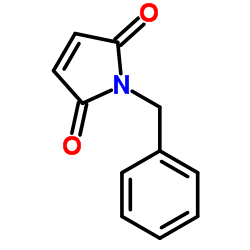
1-Benzylpyrrole-2,5-dione structure
|
Common Name | 1-Benzylpyrrole-2,5-dione | ||
|---|---|---|---|---|
| CAS Number | 1631-26-1 | Molecular Weight | 187.19 | |
| Density | 1.3±0.1 g/cm3 | Boiling Point | 338.8±21.0 °C at 760 mmHg | |
| Molecular Formula | C11H9NO2 | Melting Point | 70 °C(lit.) | |
| MSDS | Chinese USA | Flash Point | 157.9±14.4 °C | |
| Symbol |

GHS05 |
Signal Word | Danger | |
Use of 1-Benzylpyrrole-2,5-dione1-Benzylpyrrole-2,5-dione is a biochemical reagent that can be used as a biological material or organic compound for life science related research. |
| Name | N-Benzylmaleimide |
|---|---|
| Synonym | More Synonyms |
| Description | 1-Benzylpyrrole-2,5-dione is a biochemical reagent that can be used as a biological material or organic compound for life science related research. |
|---|---|
| Related Catalog |
| Density | 1.3±0.1 g/cm3 |
|---|---|
| Boiling Point | 338.8±21.0 °C at 760 mmHg |
| Melting Point | 70 °C(lit.) |
| Molecular Formula | C11H9NO2 |
| Molecular Weight | 187.19 |
| Flash Point | 157.9±14.4 °C |
| Exact Mass | 187.063324 |
| PSA | 37.38000 |
| LogP | 1.78 |
| Vapour Pressure | 0.0±0.7 mmHg at 25°C |
| Index of Refraction | 1.625 |
| Water Solubility | Insoluble |
Synonym:None Known Section 2 - COMPOSITION, INFORMATION ON INGREDIENTS
Risk Phrases: 34 Section 3 - HAZARDS IDENTIFICATION EMERGENCY OVERVIEW
Causes burns.Corrosive. Potential Health Effects Eye: Causes eye burns. May cause chemical conjunctivitis and corneal damage. Skin: Causes skin burns. May cause skin rash (in milder cases), and cold and clammy skin with cyanosis or pale color. Ingestion: May cause severe and permanent damage to the digestive tract. Causes gastrointestinal tract burns. May cause perforation of the digestive tract. The toxicological properties of this substance have not been fully investigated. May cause systemic effects. Inhalation: Causes chemical burns to the respiratory tract. The toxicological properties of this substance have not been fully investigated. Aspiration may lead to pulmonary edema. May cause systemic effects. Chronic: Effects may be delayed. Section 4 - FIRST AID MEASURES Eyes: Get medical aid immediately. Do NOT allow victim to rub eyes or keep eyes closed. Extensive irrigation with water is required (at least 30 minutes). Skin: Get medical aid immediately. Immediately flush skin with plenty of water for at least 15 minutes while removing contaminated clothing and shoes. Wash clothing before reuse. Destroy contaminated shoes. Ingestion: Do not induce vomiting. If victim is conscious and alert, give 2-4 cupfuls of milk or water. Never give anything by mouth to an unconscious person. Get medical aid immediately. Inhalation: Get medical aid immediately. Remove from exposure and move to fresh air immediately. If breathing is difficult, give oxygen. Do NOT use mouth-to-mouth resuscitation. If breathing has ceased apply artificial respiration using oxygen and a suitable mechanical device such as a bag and a mask. Notes to Physician: Section 5 - FIRE FIGHTING MEASURES General Information: As in any fire, wear a self-contained breathing apparatus in pressure-demand, MSHA/NIOSH (approved or equivalent), and full protective gear. During a fire, irritating and highly toxic gases may be generated by thermal decomposition or combustion. Extinguishing Media: Use water spray, dry chemical, carbon dioxide, or chemical foam. Section 6 - ACCIDENTAL RELEASE MEASURES General Information: Use proper personal protective equipment as indicated in Section 8. Spills/Leaks: Vacuum or sweep up material and place into a suitable disposal container. Clean up spills immediately, observing precautions in the Protective Equipment section. Avoid generating dusty conditions. Provide ventilation. Section 7 - HANDLING and STORAGE Handling: Minimize dust generation and accumulation. Do not breathe dust, vapor, mist, or gas. Do not get in eyes, on skin, or on clothing. Keep container tightly closed. Do not ingest or inhale. Use only in a chemical fume hood. Discard contaminated shoes. Storage: Store in a cool, dry place. Store in a tightly closed container. Corrosives area. Section 8 - EXPOSURE CONTROLS, PERSONAL PROTECTION Engineering Controls: Facilities storing or utilizing this material should be equipped with an eyewash facility and a safety shower. Use adequate ventilation to keep airborne concentrations low. Exposure Limits CAS# 1631-26-1: Personal Protective Equipment Eyes: Wear appropriate protective eyeglasses or chemical safety goggles as described by OSHA's eye and face protection regulations in 29 CFR 1910.133 or European Standard EN166. Skin: Wear appropriate protective gloves to prevent skin exposure. Clothing: Wear appropriate protective clothing to prevent skin exposure. Respirators: Follow the OSHA respirator regulations found in 29 CFR 1910.134 or European Standard EN 149. Use a NIOSH/MSHA or European Standard EN 149 approved respirator if exposure limits are exceeded or if irritation or other symptoms are experienced. Section 9 - PHYSICAL AND CHEMICAL PROPERTIES Physical State: Solid Color: Not available. Odor: Not available. pH: Not available. Vapor Pressure: Not available. Viscosity: Not available. Boiling Point: Not available. Freezing/Melting Point: 70 deg C Autoignition Temperature: Not available. Flash Point: Not available. Explosion Limits, lower: Not available. Explosion Limits, upper: Not available. Decomposition Temperature: Solubility in water: Specific Gravity/Density: Molecular Formula: C11H9NO2 Molecular Weight: 187.20 Section 10 - STABILITY AND REACTIVITY Chemical Stability: Stable at room temperature in closed containers under normal storage and handling conditions. Conditions to Avoid: Incompatible materials, dust generation. Incompatibilities with Other Materials: Oxidizing agents. Hazardous Decomposition Products: Nitrogen oxides, carbon monoxide, carbon dioxide. Hazardous Polymerization: Has not been reported Section 11 - TOXICOLOGICAL INFORMATION RTECS#: CAS# 1631-26-1 unlisted. LD50/LC50: Not available. Carcinogenicity: N-Benzylmaleimide - Not listed by ACGIH, IARC, or NTP. Section 12 - ECOLOGICAL INFORMATION Ecotoxicity: Fish: Pseudomonas putida: Section 13 - DISPOSAL CONSIDERATIONS Dispose of in a manner consistent with federal, state, and local regulations. Section 14 - TRANSPORT INFORMATION IATA Shipping Name: NOT REVIEWED. Hazard Class: UN Number: Packing Group: IMO Shipping Name: NOT REVIEWED. Hazard Class: UN Number: Packing Group: RID/ADR Shipping Name: NOT REVIEWED. Hazard Class: UN Number: Packing group: Section 15 - REGULATORY INFORMATION European/International Regulations European Labeling in Accordance with EC Directives Hazard Symbols: C Risk Phrases: R 34 Causes burns. Safety Phrases: S 25 Avoid contact with eyes. S 36/37/39 Wear suitable protective clothing, gloves and eye/face protection. S 45 In case of accident or if you feel unwell, seek medical advice immediately (show the label where possible). WGK (Water Danger/Protection) CAS# 1631-26-1: No information available. Canada None of the chemicals in this product are listed on the DSL/NDSL list. CAS# 1631-26-1 is not listed on Canada's Ingredient Disclosure List. US FEDERAL TSCA CAS# 1631-26-1 is not listed on the TSCA inventory. It is for research and development use only. SECTION 16 - ADDITIONAL INFORMATION N/A |
| Symbol |

GHS05 |
|---|---|
| Signal Word | Danger |
| Hazard Statements | H314 |
| Precautionary Statements | P280-P305 + P351 + P338-P310 |
| Personal Protective Equipment | Eyeshields;Faceshields;full-face particle respirator type N100 (US);Gloves;respirator cartridge type N100 (US);type P1 (EN143) respirator filter;type P3 (EN 143) respirator cartridges |
| Hazard Codes | T:Toxic; |
| Risk Phrases | R20/21;R25;R34 |
| Safety Phrases | S26-S36/37/39-S45 |
| RIDADR | UN 1759 8/PG 2 |
| WGK Germany | 3 |
| Packaging Group | III |
| Hazard Class | 8 |
| HS Code | 2925190090 |
| Precursor 8 | |
|---|---|
| DownStream 10 | |
| HS Code | 2925190090 |
|---|---|
| Summary | 2925190090 other imides and their derivatives; salts thereof VAT:17.0% Tax rebate rate:9.0% Supervision conditions:none MFN tariff:6.5% General tariff:30.0% |
|
Construction of a single-chain Fv from an antibody which catalyses a Diels Alder cycloaddition.
Biochem. Soc. Trans. 24(2) , 313S, (1996)
|
|
|
Parallel synthesis and purification using anthracene-tagged substrates.
Org. Lett. 2(22) , 3509-12, (2000) [reaction: see text] A new strategy for the synthesis and purification of synthetic intermediates is described using anthracene-tagged ester substrates in conjunction with an N-benzylmaleimide resin. ... |
|
|
Copolymerization of optically active N-(l-menthoxycarbonylmethyl) maleimide with N-phenyl-or N-benzylmaleimide. Kagawa K, et al.
Polymer 36(5) , 941-48, (1995)
|
| 1H-Pyrrole-2,5-dione, 1-(phenylmethyl)- |
| 1-Benzyl-1H-pyrrole-2,5-dione |
| 1-benzyl-2,5-dihydro-1H-pyrrole-2,5-dione |
| EINECS 216-631-1 |
| N-Benzyl maleimide |
| 1-benzylpyrrole-2,5-dione |
| MFCD00014540 |
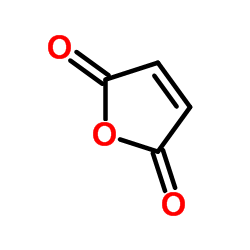 CAS#:108-31-6
CAS#:108-31-6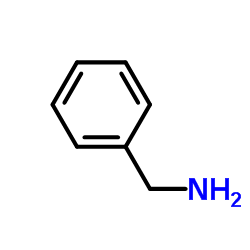 CAS#:100-46-9
CAS#:100-46-9![2-Butenoic acid,4-oxo-4-[(phenylmethyl)amino]-, (2Z)- Structure](https://image.chemsrc.com/caspic/273/15329-69-8.png) CAS#:15329-69-8
CAS#:15329-69-8 CAS#:541-59-3
CAS#:541-59-3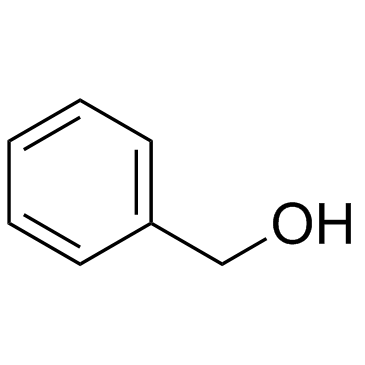 CAS#:100-51-6
CAS#:100-51-6 CAS#:133341-92-1
CAS#:133341-92-1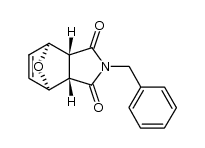 CAS#:272449-67-9
CAS#:272449-67-9 CAS#:932-90-1
CAS#:932-90-1![(1R,5S)-3-BENZYL-6-NITRO-3-AZABICYCLO[3.1.0]HEXANE structure](https://image.chemsrc.com/caspic/445/151860-16-1.png) CAS#:151860-16-1
CAS#:151860-16-1![TERT-BUTYL ((1R,5S,6S)-3-BENZYL-3-AZABICYCLO[3.1.0]HEXAN-6-YL)CARBAMATE structure](https://image.chemsrc.com/caspic/262/185559-52-8.png) CAS#:185559-52-8
CAS#:185559-52-8![2-Benzyloctahydropyrrolo[3,4-c]pyrrole structure](https://image.chemsrc.com/caspic/045/86732-22-1.png) CAS#:86732-22-1
CAS#:86732-22-1![3-Benzyl-3-azabicyclo[3.1.0]hexane-2,4-dione structure](https://image.chemsrc.com/caspic/318/73799-63-0.png) CAS#:73799-63-0
CAS#:73799-63-0 CAS#:85627-45-8
CAS#:85627-45-8![3-Benzyl-3-azabicyclo[3.1.0]hexan-6-amine structure](https://image.chemsrc.com/caspic/228/155748-81-5.png) CAS#:155748-81-5
CAS#:155748-81-5![2,5-DIBENZYLTETRAHYDROPYRROLO[3,4-C]PYRROLE-1,3(2H,3AH)-DIONE structure](https://image.chemsrc.com/caspic/092/165893-99-2.png) CAS#:165893-99-2
CAS#:165893-99-2![6-Amino-3-benzyl-3-azabicyclo[3.1.0]hexane structure](https://image.chemsrc.com/caspic/407/151860-17-2.png) CAS#:151860-17-2
CAS#:151860-17-2![2-Benzyloctahydropyrrolo[3,4-c]pyrrole structure](https://image.chemsrc.com/caspic/338/172739-04-7.png) CAS#:172739-04-7
CAS#:172739-04-7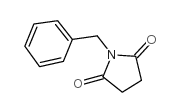 CAS#:2142-06-5
CAS#:2142-06-5
